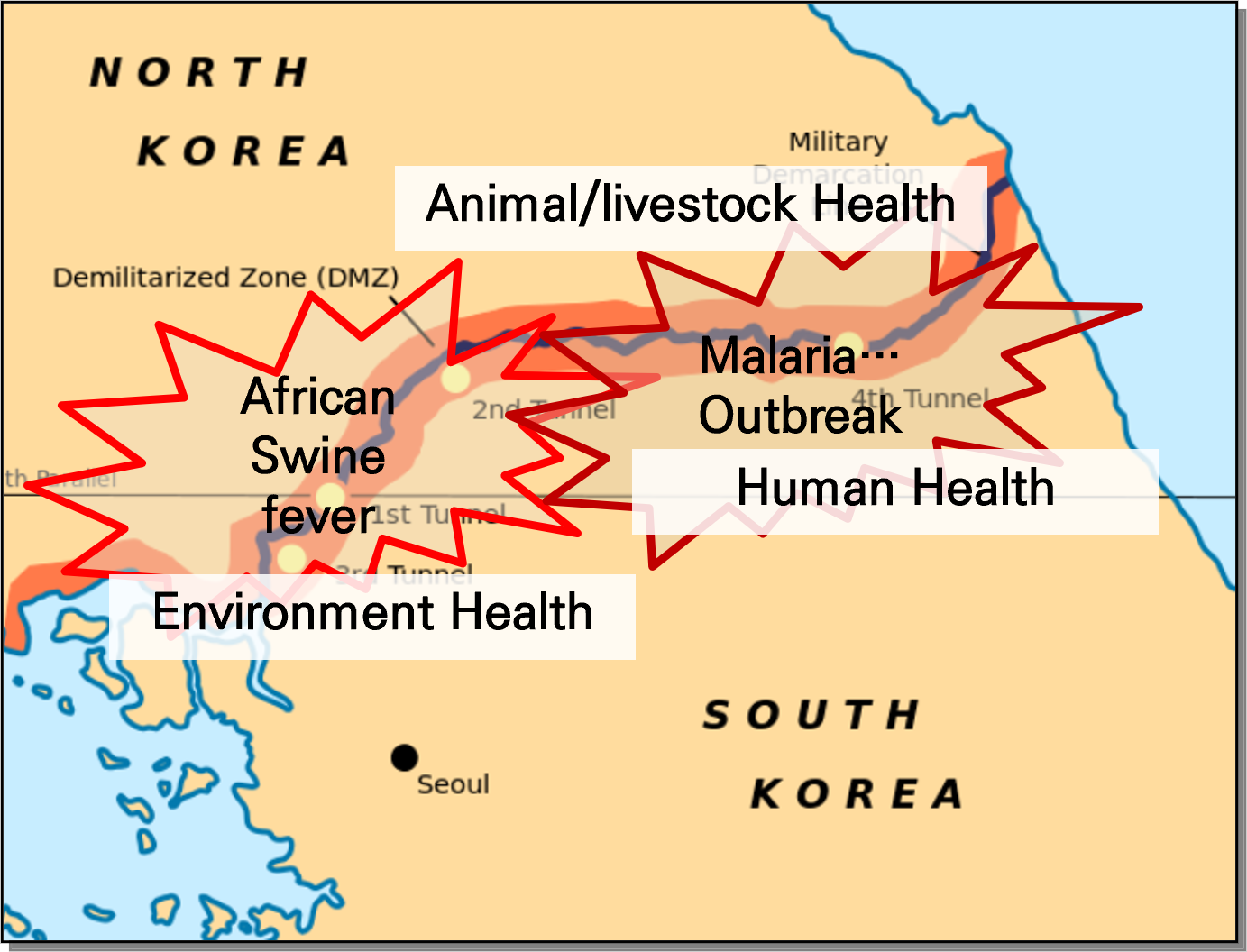Collaboration against infectious diseases in border region between North and South Korea
Focusing on lessons from cooperative exchange experiences between East and West Germany
DOI:
https://doi.org/10.37944/jams.v6i2.219Keywords:
inter-Korean health and medical cooperation, inter-Korean relations, spread of infectious diseases, border region between North and South Korea, Korean demilitarized zone (DMZ)Abstract
This study aims to prepare countermeasures that prevent the spread of infectious diseases including malaria and African Swine Fever (ASF) in regions adjacent to the DMZ and border region between North and South Korea and propose exchanges and collaboration measures between North and South Korea against diseases. For this, we reviewed cases of inter-Korean cooperation promoted by the Korean government or local governments and related studies and examined collaboration and problem factors in health and medicine between North and South Korea. Additionally, rooted by the exchange model for border areas between East and West Germany, we suggest applicable measures in the inter-Korean border areas. We put forward proposals for the continuous and specific development of inter-Korean health and medical cooperation plan on the basis of establishing Committee on Border Areas and Agreement on Health and Medicine by supplementing the limitation of piecemeal approach and support at one-time in North-South Korea relations in the past. Additionally, the current study suggests the need for inter-Korean cooperation at the local government level for joint malaria prevention, and prevention of the spread of livestock infectious diseases.
Metrics
References
Choi, H. J. (2023). A Study on South Korea’s Damage Limitation Capability and Vulnerability in Preparation for North Korea’s Nuclear Threat. Military Research and Development, 17(1), 55-80. https://www.earticle.net/Article/A431852
Cohi, S. H. (2009). A study of the reinvigoration of exchanging cooperation projects by local governments located near the North Korea borderline [Master’s dissertation, Chung-Ang University]
Kim, B. K. (2018). Sinn und Regelungsinhalt des Abkommens zwischen Süd- und Nordkorea auf dem Gebiet des Gesundheitswesens. CAUJLS, 42(3), 163-208. https://doi.org/10.22853/caujls.2018.42.3.163
Lee, J. H. (2010). Confidency Building Measure & Peaceful Utilization of the South-North Border Region. [Doctoral dissertation, Kyonggi University]
Lim, E. C. (2023). A Study on the Ripple Effect of North Korea’s COVID-19 Emergency Quarantine Measures. THE JOURNAL OF POLITICAL SCIENCE & COMMUNICATION, 26(1), 95-126. https://doi.org/10.15617/psc.2023.2.28.1.95
Park, H. M. (2020). Inter-Korea Cooperation to Anti-disasters, its legal basis and examinations in public law aspect. Administrative Law Journal, 61, 29-56. https://doi.org/10.35979/ALJ.2020.05.61.29
Ryu, S. I., & Lim, J. C. (2022). A Study on the Border Areas of North and South Korea: Focusing on the Disaster Cooperation in the Border Area of East and West Germany. Crisisonomy, 18(3), 33-48. https://doi.org/10.14251/crisisonomy.2022.18.3.33
So, S. K. (2007). Die Bedeutung der deutschen Zonenrandfoerderungspolitik fuer Korea. Journal of Law and Politics research, 7(2), 409-431. https://doi.org/10.17926/kaolp.2007.7.2.409
Yoon, M. G. (2012). A Study on Exchanges and Cooperation of the Inter-Korea Relations Initiated by Local Autonomy: border⋅ non-border region comparative analysis. [Master’s dissertation, Inje University]

Downloads
Published
How to Cite
Issue
Section
License
Copyright (c) 2023 Journal of Advances in Military Studies

This work is licensed under a Creative Commons Attribution 4.0 International License.

This work is licensed under a Creative Commons Attribution 4.0 International License.

이 저작물은 크리에이티브 커먼즈 저작자표시 4.0 국제 라이선스에 따라 이용할 수 있습니다.






